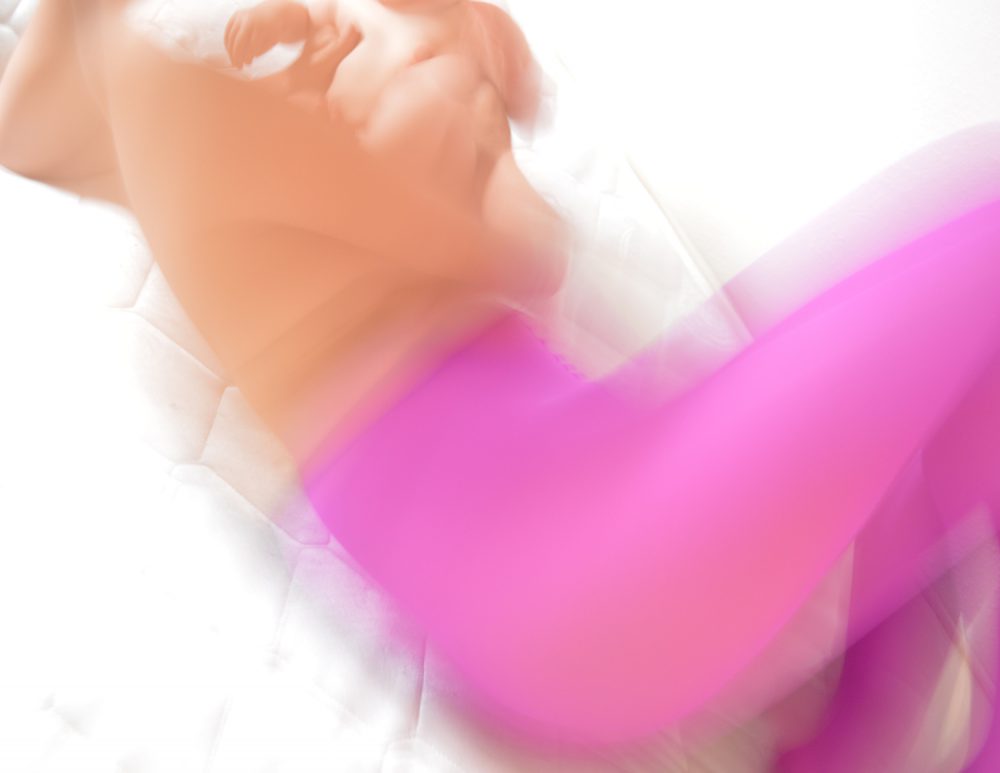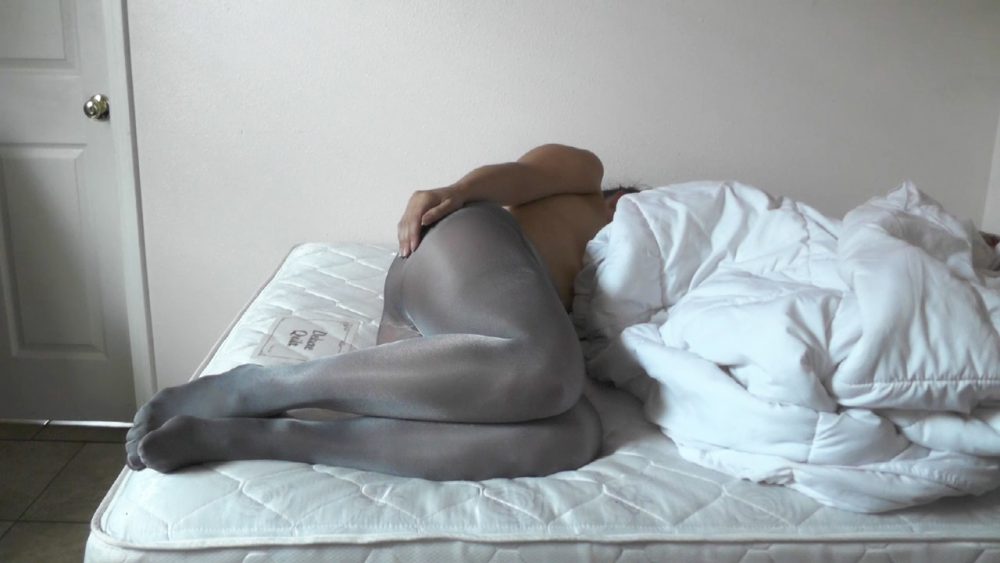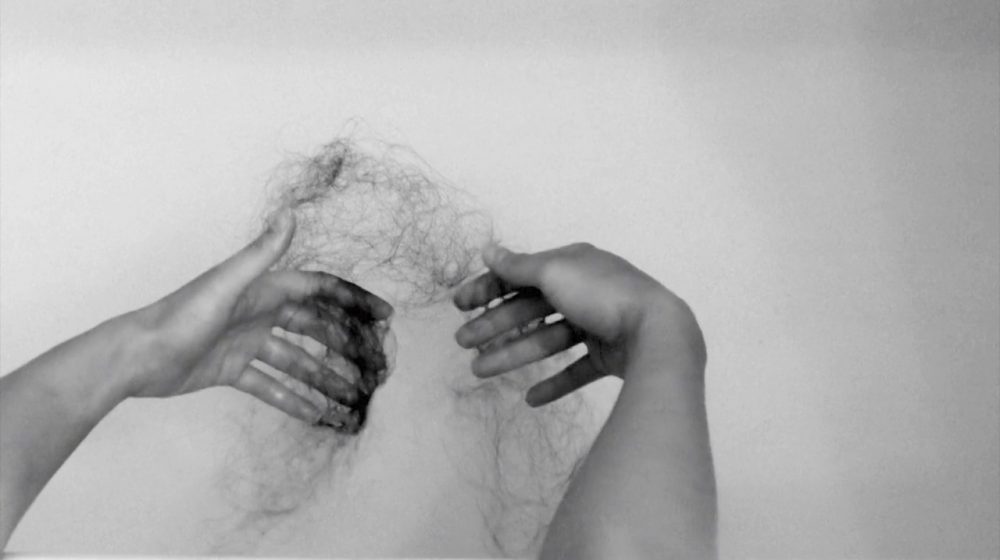A Dual Role: Robyn LeRoy-Evans’ Artist Residency in Motherhood
Ashley L. Voss talks to artist Robyn LeRoy-Evans about the difficult balance of raising a child while nurturing a creative practice.

Robyn LeRoy-Evans, Attachment Principles, 2017. Archival print. Courtesy the artist.
“I was very fearful of losing my identity as an artist after my daughter was born. I did not want to be known only as mother,” says New Orleans-based artist Robyn LeRoy-Evans. There is a longstanding belief that being a responsible mother and a serious artist are mutually exclusive endeavors. The anxiety associated with parenthood is shared amongst many career-focused women—especially considering that one’s time is limited, travel becomes much more difficult, and reassessing one’s finances is a necessity. For artists, this fear is compounded by the fact that many opportunities, such as residencies, exclude families from attending. Fortunately, there is a community built around challenging the stigma of motherhood for working artists.
The Artist Residency in Motherhood (ARiM) is a self-directed artist residency and online community that empowers artists who are also mothers. Lenka Clayton, a British conceptual artist currently living in Pittsburgh, formed the residency in 2012 and made 32 artworks over the three years leading up to the birth of her second child. Clayton reimagined the framework of a traditional artist residency—with the purpose of dedicating time to art-making—to accommodate mothers. Fully customizable and free to join, the residency is unique in that it takes place entirely inside the resident’s home—with a website serving as a public face and structure for the project. There is a downloadable “residency kit” for artists to use that includes an official letter of invitation, a manifesto that can be personalized, and planning tools.
A questionnaire is provided to help structure the individually tailored residencies. Prompts include: “Describe as specifically as possible anything about your current situation that makes your creative life difficult”; “What do you need that you currently don’t have?”; and “Alternatively look at how you might reconsider things you already have access to.” These questions help the artist understand what she needs to secure in order to accomplish her residency, as well as how she will structure it. The ARiM residencies take different forms since each artist has complete control over the duration of the residency, what she hopes to focus on artistically, how many hours she works, and how she holds herself accountable. This opportunity is primarily about being a part of a larger network of mother-artists who schedule the time to focus on creative pursuits.

A still from Robyn LeRoy-Evans’ Movements for Motherhood, No. 1, 2017. Single-channel video. Courtesy the artist.
LeRoy-Evans’ personal artist manifesto reads:
I am now a mother-artist.
I will strive to continue making art, despite my fears, and despite the ways in which the art world, and society in general, have made this double-life of parenthood/professional artist seem problematic or unrealistic. I will not allow negative thinking to overwhelm me or stifle my creativity. I will press on, little by little, growing my practice as my baby girl grows alongside me, in my studio, every day.
For 30 minutes every day (at the very least!) I will carve out time to dedicate to my practice. Whether that 30 minutes is spent reading, researching, applying for opportunities, or making new work, I spend 30 minutes each day as an artist, working.
I am now a mother-artist, and I have important work to do!
LeRoy-Evans joined the residency this May, immediately after reading an article mentioning the project on Artsy by Marina Cashdan, the website’s editorial director and a mother. LeRoy-Evans was interested in the community that the residency supports: “Life as an artist can feel very isolating at times, and certainly motherhood intensifies this feeling. I was so relieved to find ARiM because I no longer felt like I was embarking on this extraordinary, terrifying, unknowable journey alone.” Currently, there are over 400 artists around the world participating in ARiM.
Since beginning her residency, LeRoy-Evans has flourished creatively—making work directly related to her new dual role as a mother and artist. Movements for Motherhood, No. 1, 2017, is a short video documenting the artist trying to roll off of the bed without waking her baby. In another video work, Bathing The Fallen, 2017, LeRoy-Evans shares her experiences with postpartum hair loss following the birth of her daughter. She is currently organizing her first solo exhibition, which opens at The Front in October.

A still from Robyn LeRoy-Evans’ Bathing the Fallen, 2017. Single-channel video. Courtesy the artist.
“My mother was a professional stained glass artist; she passed away when I was sixteen. I must remind myself of her strength and everything she accomplished while I was a small child. She never stopped working. I feel her loss even more deeply now that I am a mother, too, and that has been very hard. But I honor her by staying true to myself and working hard for what I love,” says LeRoy-Evans.
To maintain accountability, LeRoy-Evans regularly updates her social-media accounts with images documenting the projects she is working on as well as her experiences during the residency. Her methods of working continue to adapt as her daughter grows. She is currently training herself to best utilize the small amounts of time she has to create fluid transitions in and out of art-making.
There is more to nurturing than caring for offspring—one must also nurture a creative spirit. “It became tremendously important to me that my daughter grew up understanding that I have my own desires, dreams, and passions and that my ability to love and care for her would not be diminished in any way by pursuing them,” says LeRoy-Evans. ARiM reframes the idea of parenthood as a valuable site for creative practice, rather than an obstacle to be overcome, continuing a lineage of works made by artists and mothers. For example, painter Elizabeth Murray decided to incorporate the playfulness she observed from her children into the studio. Rather than compartmentalizing her artistic practice from motherhood, Murray embraced the frustrations and joys of raising children, which are evident in her vibrant abstract paintings. At the time of her 2005 retrospective at the Museum of Modern Art in New York, Murray was one of only a handful of female artists to have been highlighted with a major solo exhibition there.
Similarly, ARiM suggests that motherhood can accompany and be part of a successful artistic practice. In addition to providing support and encouragement to artists who are also mothers, this residency serves as a reminder of the importance of stubbornly pursuing dreams regardless of any doubts. LeRoy-Evans says, “My daughter must know the importance of finding whatever it is in this world that speaks to her soul, and when she finds it, to never, ever stop carving out time for it.”
Editor's Note
Robyn LeRoy-Evans’ “A Growing Dance” is on view October 14–November 5, 2017, at The Front (4100 St. Claude Avenue) in New Orleans.



